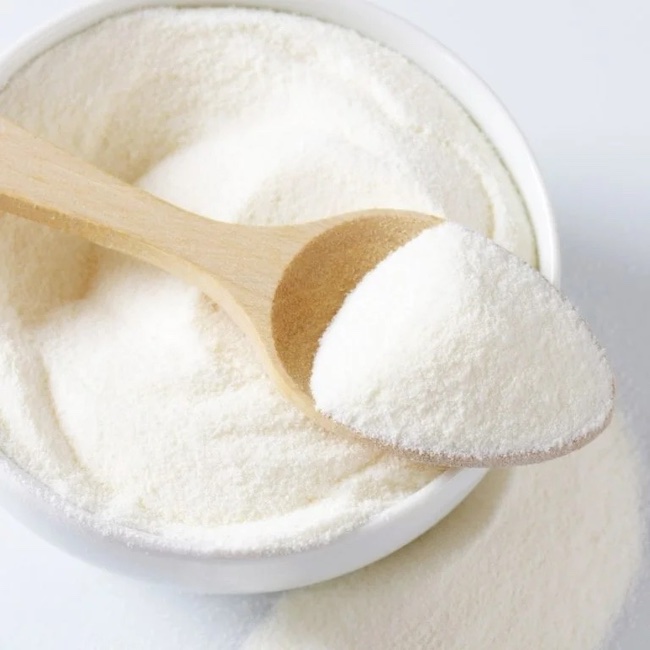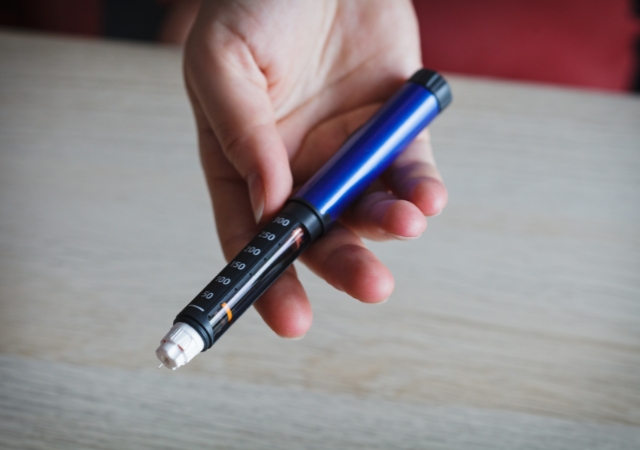
If you are a person with Type 2 diabetes and mealtime insulin isn’t helping in controlling your blood sugar levels then adding Pramlintide, also known as SymlinPen, could benefit you.
SymlinPen slows down the rate at which food moves through the stomach. This also helps to slow down the rate of sugar releasing into the bloodstream.
If your doctor prescribes SymlinPen, you will need to reduce your dose of mealtime insulin.
It’s not recommended for children. Your doctor will work closely with you to determine the right dosage for your body. The most common side effect of SymlinPen is nausea. While your doctor may start you on the lowest dose possible, some nausea may still occur. It usually decreases after a few weeks of taking the medication. SymlinPen should be stored in a refrigerator until being used.
What is Pramlintide (SymlinPen)?
Pramlintide is an injectable medication used in addition to insulin. It’s considered as an antihyperglycemic, which means that it slows down the rate at which food moves through the stomach. This helps to prevent blood sugar levels from rising too quickly after a meal. Pramlintide has also been shown to decrease appetite which may cause weight loss.
Pramlintide is the synthetic form of amylin. Amylin, like insulin, is produced by the pancreas. Both amylin and insulin work together to help regulate blood sugar.
Amylin slows the release of sugar in the bloodstream as a results of slowing down how fast the stomach empties. It also restrains the release of glucagon, a hormone that tells the liver to make sugar. Both amylin and insulin are released when blood sugars are high.
I also recommend reading these guides:
How to use Pramlintide (SymlinPen)?
You must consult your doctor before using Pramlintide. You will have to lower your mealtime insulin dose; your doctor will give you instructions on how much insulin to use along with your SymlinPen. To use, you inject the SymlinPen into your abdomen or thigh. It’s best to let SymlinPen come up to room temperature before injecting, to reduce the risk of an injection site reaction.
If you’ve injected insulin in the same location, make sure your SymlinPen injection is at least two inches away from where your insulin injection site is. You do not want to inject them both at the same exact site. Always use a new needle for all injections. Discard Pramlintide solution if it appears cloudy.
Remember to always check your blood sugar before and after meals. SymlinPen is injected before all meals of at least 250 calories and 30 grams of carbohydrates. Your doctor will instruct you to cut your insulin dose in half when using SymlinPen.
If you are not experiencing nausea three days in a row your doctor will most likely increase your SymlinPen dose to 120 mcg. Again, if you start to experience nausea make sure you let your doctor know so he or she can adjust the dose as needed.
Cautions While Using SymlinPen?
Do not use SymlinPen if you have low blood sugar. If you’re planning on skipping a meal or having a snack less than 250 calories - do not inject SymlinPen. If you are pregnant or nursing, you should not be taking Symlin. Sometimes SymlinPen can cause low blood sugar.
Wait to operate any vehicle until you know how your body reacts to SymlinPen. Do not drink alcohol while using SymlinPen. Do not take SymlinPen if you have gastroparesis, or your stomach does not empty as fast as normal.
Possible Side Effects of SymlinPen
It’s important to be aware of any side effects of your medications. Some possible side effects of SymlinPen include low blood sugar and nausea. Low blood sugar is a possible side effect, especially when you first start taking SymlinPen. It’s important to always check your blood sugar levels before and after meals. Also, make sure you’ve cut your mealtime insulin dose in half while taking SymlinPen.
Always keep juice, glucose tablets, hard candy or glucagon with you to raise your blood sugar if needed. The most common side effect of SymlinPen is Nausea. It’s usually mild and only occurs the first couple weeks of taking the medication. Your doctor will start you on the lowest dose possible to help reduce the risk of nausea.
Remember, to always tell your doctor if you experience any nausea so they can adjust your dose as needed. Other side effects include: decreased appetite, stomach pain, fatigue, dizziness, vomiting, indigestion, shakiness, sweating, and headache.
Storing SymlinPen
SymlinPen must be stored in the refrigerator. Remove it from the refrigerator about a half hour before use. This lets the medication raise to room temperature before injecting which reduces the risk of injection site discomfort and swelling. Make sure you throw any SymlinPen away if it’s been opened longer than 30 days. Never freeze or use frozen Symlin. And as always, keep the medication away from children.
Medications That May Interact with SymlinPen
You should tell your doctor of any and all medications you’re taking before starting SymlinPen. Beta-blockers, clonidine, guanethidine, and reserpine may make it difficult for you to tell if when your blood sugar is low. This may be dangerous because SymlinPen is made to lower your blood sugar and you need to be able to tell if it’s too low.
The risk of low blood sugar may be increased by taking medications such as: Angiotensin-converting enzyme (ACE) inhibitors, disopyramide, fibrates, fluoxetine, monoamine oxidase inhibitors (MAOIs), pentoxifylline, propoxyphene, salicylates, somatostatin analogues, sulfonamide antibiotics, or sulfonylureas. SymlinPen’s side effects may be increased when taking medication like alpha glucosidase inhibitors or anticholinergics. Again, make sure you check with your doctor before starting, stopping, or changing any medication dose.
What SymlinPen Users Are Saying
One patient says he’s been taking SymlinPen for about one year and he’s already lost 95 pounds. He said the side effects were mild and worth what he lost in weight. His insulin has been reduced from 200 units to about 50 units a day.
Another user has been on the medication for two years and she says the benefits strongly outweigh the side effects for her. Lastly, a woman has used SymlinPen for just about one month. She started with 60 mcg and is now up to 120 mcg with meals. She hasn’t noticed any side effects like nausea or tiredness and says her blood sugar is much better.
Conclusion
All in all, SymlinPen seems like a suitable addition if your blood sugar levels do not respond to insulin alone. By slowing the rate at which the stomach empties, it helps to control blood sugar levels better than insulin by itself. You must keep SymlinPen refrigerated and make sure to discard any solution that has been opened longer than 30 days. But you will normally take this medication three to four times a day so there isn’t much waste.
Again, the most common side effect is nausea but by following your doctor's orders of starting with a lower dose you can help to keep that risk low.
Keep an eye out for signs of low blood sugar and always monitor levels before and after meals. Most patients on SymlinPen are glad they are. Losing weight is just another added benefit of controlling your blood sugar levels. Always check with your doctor before starting, stopping, or changing any medications.
TheDiabetesCouncil Article | Reviewed by Dr. Christine Traxler MD on May 20, 2020
References
- https://medlineplus.gov/druginfo/meds/a605031.html
- https://www.symlin.com/using-symlin/what-you-should-know.html
- https://www.symlin.com/
- https://www.fda.gov/downloads/drugs/drugsafety/ucm089141.pdf
- https://www.drugs.com/cdi/symlin-pen.html
- http://www.webmd.com/drugs/drugreview-149786-SymlinPen+120+subcutaneous.aspx?drugid=149786&drugname=SymlinPen+120+subcutaneous





